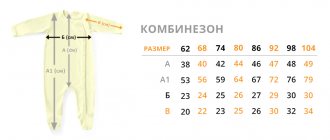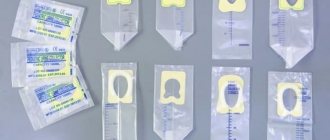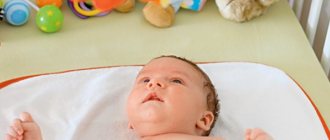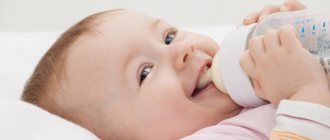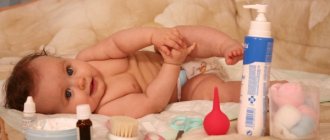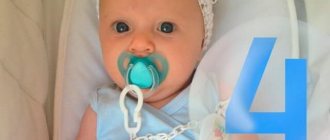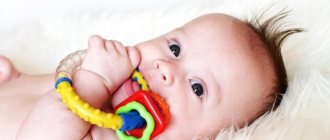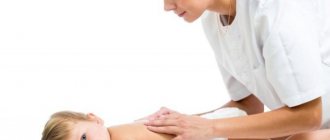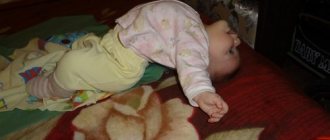A newborn baby seems so helpless and weak that it is difficult to imagine how he will be able to survive in the new world around him. Nevertheless, the baby’s body is quite capable of coping with the basic tasks that it faces from the first minutes of life outside the mother’s body. This happens thanks to innate reflexes, of which there are more than 75. Innate reflexes allow the baby to perform simple actions, without which his existence in the new reality is impossible. What are the reflexes of a newborn, and what are they?
Basic reflexes
Reflexes are the body’s responses to the action of any external stimuli. Their importance is extremely important for normal life.
In medical practice, the main reflexes are usually divided into two groups:
- Unconditional . They are innate responses of the body, formed in the process of evolution. Unconditioned reflexes are considered relatively constant; their occurrence is carried out with the participation of all parts of the central nervous system. Some of them fade away some time after birth.
- Conditional . They are so-called individual responses that occur with the help of the cerebral cortex. Conditioned reflexes are formed in the process of life. One of their most important meanings is considered to be human adaptation to changes in living conditions.
It is worth noting that in the first months of life, only unconditioned reflexes are well developed in a child. The baby is born with them. Some remain for life: swallowing, tendon (muscle contraction when tapping a tendon - this is the technique used by neurologists when delivering light blows to the knee area), corneal. The latter is characterized by a reflex closing of the eyelids when touching the cornea. Conditional ones are formed as the baby develops.
Why do reflexes change?
A reflex is the body’s response to a specific stimulus. By their severity and strength one can judge the state of the baby’s nervous system. Normally, the Moro reflex is observed from birth. If it is expressed unevenly, one side reacts more brightly than the other, hemiparesis is suspected. This is a pathological lesion of the nervous system on the part of one hemisphere, leading to weakness in the arm and leg, up to the complete impossibility of independent movements. If a traumatic brain injury occurs during childbirth, then automatism is absent immediately after birth; in a mild form, it may appear after 1-2 days.
The Moro reflex changes in intracerebral hypertension. The higher the intracranial pressure, the less pronounced the automatism, sometimes it becomes incomplete: when hitting the table, the baby spreads his arms slightly to the sides and immediately returns them back.
With pathology of the nervous system, not only long-term preservation of automatism is observed, but also its appearance at the wrong moment. It can appear during normal manipulations, during crying and restlessness of the baby.
Reflex responses of newborn children are direct signs of normal functioning of the nervous system. Not only the long-term persistence of the response is dangerous, but also its disappearance ahead of time and a change in activity. Therefore, children who have suffered acute hypoxia during labor and extraction using a vacuum extractor should be observed by a neurologist.
Why are unconditioned reflexes needed?
During the first month after birth, children are considered defenseless, because adaptation to new living conditions is a huge stress for the child. Therefore, unconditioned reflexes play an important role in the baby’s adaptation to existence outside the mother’s body.
Pediatricians believe that their main functions are:
- Protection of the child’s body, not yet accustomed to new living conditions.
- Some of them are necessary for subsequent replacement by conditioned ones produced in older age.
- Ensuring the normal existence of the child in the external environment.
It is important to know that the main meaning of all unconditioned reflexes of a newborn baby is to help the body adapt to life during the first months after birth. That is why the absence or weakening of some responses alarms doctors.
Important signs of the severity of a newborn’s reflexes
- Normally, a newborn’s reflexes must be symmetrical. This means that what is done, relatively speaking, to the right side, should be done in exactly the same way to the left, and vice versa. Asymmetry in the manifestation of reflexes is an important sign that must be reported to the doctor.
- Weak reflexes (according to the child’s age)
- Reflexes do not disappear in due time (at a certain age of the child).
These signs can be detected by a pediatrician when examining a child, or they can also be detected by parents (in this case, be sure to notify the doctor).
Oral reflexes
Oral reflexes play an important role in the development of the newborn. It is thanks to them that the child is able to suckle at his mother's breast. Parents should know what oral physiological reflexes exist, because their absence can lead to serious disruptions in normal functioning.
| Reflex name | How is it checked? | Until what age does it exist? |
| Sucking | It occurs as a result of placing a finger (pacifier) in the child’s mouth at a depth of approximately 2-3 cm. At the same time, the baby begins to make certain movements with his tongue, cheeks, and lips. The same thing happens when the baby is applied to the mother’s breast. The reflex develops from the first minutes of life, playing an important role in nutrition | Up to 12 months |
| Swallowing | When food enters the oral cavity, the baby automatically swallows the contents | Remains until the end of life |
| Proboscis | If you gently tap a child’s upper lip with a finger, the facial muscles begin to contract, manifested by pulling the lips forward in the form of a “bow”, reminiscent of a proboscis. | Up to 2-3 months |
| Palm-oral (Babkina) | If you take the baby's palm and lightly press on it with your fingertips, the baby turns his head in this direction, simultaneously opening his mouth | Up to 2-3 months |
| Search (Kussmaul) | When stroking the cheek of a newborn near the corner of the mouth, the head turns in this direction. The baby “looks” for the mother’s breast by opening its mouth. Therefore, many women touch the baby’s cheek with their nipple before feeding. | Up to 3-4 months, sometimes can persist throughout the first 10-12 months of life |
One of the most important in the first months of life (besides oral ones) is the upper protective reflex. It manifests itself in turning the head to the side with simultaneous attempts to lift it up when turning the baby onto its tummy. This way the baby ensures normal airway patency.
Basic abilities of babies
There are more than 17 congenital reflexes of a newborn. The most important reflexes include:
1. Sucking. This reaction manifests itself in the first hours of life and is observed throughout the first year. The baby grabs the pacifier and nipple with his lips and begins to suck on them rhythmically.
2. Kussmaul search reflex. When you touch the corner of the baby's mouth, you notice a sagging sponge. There is also a turning of the head towards the parent. When pressing on the middle of the upper lip, it is raised and the head is extended. When pressing on the middle of the lower lip, it reflexively lowers, and the head bends. Such reflex actions are noticed in a baby up to 4 months
Due attention must be paid to symmetry
3. Proboscis reflex. If you sharply press crumbs onto the nasolabial fold, the baby automatically stretches out his lips and begins to look for the nipple. This reflex reaction disappears by 4 months of life.
4. Babkin's palmo-oral reflex. When pressing on the palm area, the child’s mouth automatically opens. Every child should have this reaction. It is more clearly expressed before putting the baby to the breast. The underdevelopment of such a reaction is noticed in cases of problems with the central nervous system. The reflex clearly manifests itself in the first 2 months of the baby’s life. Afterwards the reaction begins to weaken. In the case of a nervous system disorder, after two months the child’s reflex begins to strengthen.
5. Breath holding reflex. This reaction helps the baby pass through the birth canal with ease and without swallowing amniotic fluid. The duration of holding your breath can be no more than 6 seconds. By six months the delay time can be up to 25 seconds. By the age of one year, the time can be increased to 40 seconds.
6. Swimming reflex. When the baby is lowered into the water, he begins to show motor activity in his arms and legs. The baby can be in the water for some period of time without the help of a parent. A baby can learn complex swimming movements no earlier than 2.5 years. Children who develop this reflex from birth grow up healthier and vomit much less.
7. Grasping reflex. This strengthens the entire muscle tone. It can be very pronounced. Sometimes a child who has grabbed a finger can be lifted. The baby's grip is capable of supporting body weight. If you give your baby your index finger, you can feel how tightly he begins to grab onto it. This reaction is strongly manifested in the first 2 months of the baby’s life. If such a reaction is not developed, then it disappears by six months. Maintaining this reaction accelerates the psychophysiological development of the child.
8. Plantar reflex. This is a reflex movement that is provoked by irritation of the dermis of the foot. At the same time, the thumb sharply extends, and all the remaining fingers are compressed.
Spinal reflexes
The infant's spinal reflexes are of great diagnostic importance. They are also called motor automatisms, which allow us to assess the state of the child’s muscular system. Spinal reflexes include grasping and other types of responses.
| Reflex name | How is it checked? | Until what age does it exist? |
| Grasp reflexes | ||
| Janiszewski and Robinson | If you place your index fingers in a newborn's palm, the baby squeezes them tightly. Sometimes the force is so great that the baby can even be slightly lifted in this position | Up to 3-4 months |
| Plantar (Babinski) | When lightly stroking the baby's toes, dorsal extension of the big toe occurs and simultaneous flexion of the remaining toes (fan-shaped) | Disappears by the time the child begins to walk independently (11-12 months) |
| Other motor reflexes | ||
| Moro (hug reflex) | It is carried out by applying a light blow to the surface on which the child is lying. At the same time, he first spreads his arms to the sides, simultaneously straightening his legs, and then, as it were, hugs his body. You can also check the reflex by quickly lowering the baby 20-25 cm down and then returning it to its original position, or sharply straightening the baby’s legs at the knee and hip joints | Up to 3-4 months |
| Kernig | The baby's leg is bent at the hip and knee joints, after which they try to straighten the latter. Normally this is impossible to do | Up to 2-3 months |
| Automatic gait reflex | If you place a newborn on a table, while holding his back and head, the baby automatically makes certain movements with his legs, reminiscent of walking | Up to 1.5-2 months |
| Support reflex | Usually tested in conjunction with the previous reflex. The baby, placed on a support, straightens his torso a little, trying to stay in a standing position. | Up to 1.5-2 months |
| Crawling (Bauer) | If you turn a newborn onto his tummy and place your palm on his soles, the baby will begin to make pushing movements reminiscent of crawling | Up to 3-4 months |
| Galanta | When running a finger along the baby's back in the direction of the buttocks, the child arches it. At the same time, the leg on the touching side is extended | Up to 3-4 months |
It is worth noting that there are also so-called postural reflexes. They consist in a certain redistribution of muscle tone when the baby’s position changes. The Magnus-Klein reflex is considered one of the posotonic reflexes. It involves the baby taking a certain pose when turning his head to the side: the arm that the baby is “looking at” is unbent, and the opposite arm is bent. This is the so-called “fencing pose.” This reflex appears in the first weeks of a baby’s life and usually fades away by 4-5 months.
What are newborn reflexes?
Reflexes (also called automatisms) are certain motor reactions of a child to certain external stimuli. Relatively speaking, “if you make such and such a movement, then the child should respond with such and such a movement.” All physiological reflexes have their own time of appearance (a certain age of the child) and time of disappearance. Some reflexes may not disappear, but develop into certain motor skills and abilities.
Based on how the child’s reflexes are expressed, the doctor can draw a conclusion about the development of the nervous system (in accordance with age).
How to independently check the presence of reflexes in a child?
Many parents are interested in what reflexes a child should have in the first month of life and whether it is possible to check their presence on their own. Typically, the condition of the baby’s nervous and muscular systems is assessed by a pediatrician during an examination. However, if there is any pathology, it is extremely important to consult a doctor in a timely manner, so mothers and fathers can periodically check the presence of some responses from the baby’s body at home.
It's quite easy to do this:
- The mother can check oral reflexes before each feeding of the baby. Before giving your baby the breast or bottle nipple, you can touch the cheek or upper lip. In response, the newborn will begin to rapidly search for the stimulus, opening its mouth. Many mothers do this before feeding in order to help the child, without even suspecting that they are thereby testing a number of oral unconditioned reflexes.
- Many parents put their fingers or toys in the palms of their babies and are surprised that at the age of 1-2 months the baby squeezes them tightly. However, the newborn does this unconsciously. This manifestation is nothing more than a grasping reflex. To check it, just place your index fingers in the baby’s palms. In this case, the mother should evaluate the compression strength, symmetry, and if there are any violations, consult a pediatrician.
- Having turned the baby onto his tummy, parents will notice how he immediately turns his head to the side. This is a manifestation of the upper protective reflex. Next, you can place your palm on the baby’s feet, and you will notice how actively he begins to push off, trying to crawl. Testing this reflex is even useful; it is a kind of gymnastics for the baby.
- Gently run your finger along the plantar side of your newborn's foot, observing how his toes fan out.
- Every time you change your baby’s clothes, you can check your support and automatic walking reflexes. It is important to hold the baby's back and head.
Do not forget that during the first months of life, the child requires special attention and caution from mom and dad. Even just changing clothes for a baby can easily injure him. Therefore, it is best if the presence of reflexes is determined by a doctor.
Or parents can ask the pediatrician which of the unconditioned responses they can check on their own, without harming the baby, and how to do this correctly, turning the process into useful gymnastics that develops the child’s targeted motor activity in the future.
What are they needed for?
The innate reflexes of newborns are triggered automatically as soon as the child comes into this world. These are peculiar small programs that begin to be executed immediately. Even the first breath is considered reflective, because no one taught the baby to breathe.
There are several dozen of them (about 75), but in pediatrics, 15 clinically important unconditioned reflexes of newborns are distinguished, the tasks of which are very different: some disappear instantly after the birth of the baby, since they are programmed only to facilitate this very birth, others are needed to stimulate the development of new ones, and There are those that stay with a person for life.
The life of a newborn depends entirely on the adults who care for him. He is not able to independently obtain food, drink or warm himself. The well-being of the little man depends only on the guardians; only they can make sure that he is not cold and hungry.
But at the same time, the child’s ability to accept this care will depend on the innate reflexes of newborns, on their activity. What does this mean? Let's take feeding a baby as an example. In order to feed him, you will need breast milk or a bottle of formula. But the baby will have to suck on the breast or bottle! The outcome of feeding will depend on the severity of his sucking reflex: the more active this reflex is, the more likely the baby will get to the hind milk - the fattest and most nutritious one. So this skill ensures his survival.
What to do if reflexes are weak?
Some reflexes of newborns do not appear immediately after birth or are manifested to an insufficient extent. There can be many reasons for this: birth injuries, developmental disorders of the child’s nervous system, prematurity, pathologies of the spine (especially the cervical spine), asphyxia. It is important to know that weakening of some reflexes does not always indicate a disease. For example, when the baby is not hungry, when the mother's breast nipple is placed in his mouth, sucking movements may not occur.
In the diagnosis of pathologies of the central nervous system, the presence of spinal reflexes is of great diagnostic importance.
They may weaken or not occur at all in case of serious violations, so mothers and fathers should pay attention to the following points:
- Symmetry of the grasping reflex. If a child squeezes his mother’s finger with only one hand, this may indicate cerebral palsy, paresis, or cerebral hemorrhage.
- The baby extends his arms to the sides (Moro reflex). If abduction of only one arm is observed, this may be a sign of a clavicle fracture or paresis.
- A weakened crawling reflex often indicates a spinal cord injury.
- “Automatic walking” is absent in case of paresis, decreased muscle tone, and cerebral palsy. Such reasons lead to a weakening of the support reflex.
It is important to monitor the position of the newborn's head when turning him on his tummy. The absence or weakening of the protective reflex is considered one of the first symptoms of cerebral palsy. If a mother notices such disturbances in her baby, she should immediately consult a doctor. There is no need to panic: perhaps the parents incorrectly checked for the presence of some unconditioned reflexes.
There is no point in ignoring problems that have arisen and postponing a visit to the pediatrician until later. Remember: only a qualified specialist can assess the condition of the nervous and muscular systems.
An important point is that mothers and fathers know until what age the child retains unconditioned reflexes. If by 5-6 months the extinction of many of them is not observed, you should consult a doctor. Strengthening or the presence of unconditioned reflexes in older age occurs with increased nervous excitability and muscle hypertonicity.
Having learned information about what reflexes a newborn should have, as well as their importance in the development of the child, mothers and fathers will be able to carefully monitor the health of their baby. It is important to remember that often it is by their absence or weakening that pathologies of the nervous, muscular, and skeletal systems can be determined. All that is required from parents is attention, which is an integral part not only in raising, but also in preserving the health of the child.
https://youtu.be/wHW3JQlJQEw
Weak or not at all
In some newborns they are very weak, do not appear clearly or appear a little later. This may be due to birth injuries, certain diseases, etc. In premature babies and babies who have experienced mild asphyxia, oral and spinal reactions are weakly manifested.
But if they are not there at all, then the baby must be immediately provided with resuscitation care, which is carried out only by specialists. The absence of reactions can indicate the most unpleasant things - from intrauterine defects and severe birth injuries to severe asphyxia or strangulation by the umbilical cord. The faster the problem is fixed, the less unpleasant the consequences will be. True, the child’s body is very flexible, the reserves that nature has endowed it with are enormous. Therefore, in most cases everything works out well, and the body recovers quickly.
Monroe reflex
Or a baby's reaction to fear. The reflex consists of two stages. If you hit the surface where the newborn lies at a distance of about 20 cm from his head, you can see how the baby will first unclench his fists and spread his arms to the sides (first stage), and then bend his arms and try to hug himself (second stage).
Every newborn baby should have unconditioned reflexes, and as they grow older, these automatic movements disappear, giving way to conscious reactions and movements. Thus, automatic sucking will turn into meaningful eating, and automatic crawling will turn into active eating.
Tonic neck reflex
When a child with cerebral palsy turns his head, he can observe an asymmetrical tonic reflex - increased tone of the extensor muscles. It looks like this: in the direction where the child is looking, the arm extends, and at the same time the second arm bends at the elbow. In healthy infants, a subtle asymmetric effect may appear at 3–4 months and quickly disappear. In cerebral palsy, the disease has been studied for several years. This does not allow the child to grow and develop normally: he cannot pick up toys himself, does not focus his gaze on a specific object, and has poor control over his movements. The situation only gets worse with age.
What does a pediatric neurologist examine in newborns?
The first visit to a neurologist includes:
- analysis of the child’s physical development;
- examination for developmental defects and genetic disorders;
- psycho-emotional assessment of the child;
- a detailed survey of parents about neurological problems in family members, how the pregnancy proceeded, about the baby’s behavior, and complaints from parents.
Naturally, a neurologist checks the condition of the intracranial nerves and analyzes all the reflexes inherent in infants, including the Moro reflex.
How to test your reflex
The Moro reflex in toddlers is a spontaneous reaction, therefore, if you want to check at home whether everything is okay with this in your baby, then you need to perform several specific actions that cause this reaction:
- put the child on the changing table, while the situation around him should be quite familiar to him, everything is quiet and calm. Sharply hit the table with your palms above the baby's head, about 15-20 centimeters above his crown. The baby will be scared and give you the necessary reaction;
- on the same changing table, grab the baby’s legs with one hand, place the other under the pelvis, and sharply lift the baby up. Not too much, of course, and not upside down. Simply lift your pelvis and legs off the surface at an acute angle. The main thing is that the action be sudden;
- You can also simulate a fall in a different way. Place one hand under the baby's head, and with the other, bring the arms together on the chest and hold. With the hand under your head, lift the child into a semi-sitting position. At the same time, do not sit down completely, do not put stress on the spine and hold your head securely. Then sharply lower the baby back onto the table, while simultaneously removing the palm that was holding his arms. Of course, there will be no fall, because you are holding the baby tightly under the head, but due to the suddenness of the movement, the little one will be scared and will react to your actions with the Moro reflex.
Did you know? The baby is born without the bridge of his nose. It develops a little later after birth.
Formation of new reflexes
Conditioned reflexes begin to form at the end of the first month of life. The child’s motor analyzer and vestibular apparatus begin to work. But such reactions are still quite weak and can easily slow down. This indicates that the cortical structures in a small person are still immature, and excitation in them significantly prevails over inhibition.
By the end of 12 months, the second signaling system is actively developing and its activities are combined with the first. In this case, the first system allows you to analyze and control the reaction to various stimuli coming from outside. Such a system is also present in animals. The second signaling system is formed only in humans when an association of spoken or written words with objects or actions occurs.
Moro reflex in newborns
To make sure that the baby is developing correctly, you need to know what reflexes are inherent in newborns. Not knowing that sudden flinching and throwing up arms can be the norm for babies, parents can sound the alarm about the health of the baby.
One of these unconditioned reflexes, which shows the body’s protective reaction, is the Moro reflex in newborns. This reflex shows the child's fear reaction, and is caused in various ways:
- the child in his arms is sharply lowered down by 20-30 cm, and then also sharply raised;
- in a child lying on his back, the lower limbs are sharply straightened;
- sharply hit the table on which the baby is located, at a distance of 15-20 cm from the child’s head.
The baby's response will be to lean back, straighten the shoulders and spread the arms to the sides with the opening of the fists. After a few seconds, the handles return to their original position.
The Moro reflex is especially noticeable during sleep, when the baby can be frightened by any noise from the street or in the house. According to doctors, this condition does not harm the baby’s body, but can “spoil” his mood for a long time, causing prolonged crying.
The presence of the congenital Moro reflex is very important for infants; by its absence, doctors can diagnose serious diseases: cerebral edema, hemorrhages, cerebral lesions. The absence of a reflex in the first days of life may indicate an intracranial injury to the baby.
The presence of a spontaneous Moro reflex indicates the normal development of the child. Typically, the Moro reflex disappears when the child is 4 months old, and then only individual components of the reflex are observed.
In some babies, the Moro reflex is pronounced and does not go away in due time. The main treatment for the Moro reflex is to prescribe a massage that will help eliminate excessive muscle tone.
| Discharge in a newborn girl Parents who encounter discharge from a newborn girl are often perplexed. After all, the baby has just been born, why can they form? Let's figure it out together whether it's worth worrying about. | Strollers for newborns 3 in 1 Long before the birth of the child, future parents think about purchasing a stroller. The market for vehicles for infants is very large. We will talk about 3 in 1 strollers, their advantages, disadvantages and features of choice. |
| Why does a newborn shake in his sleep? Young parents always listen to the slightest sounds coming from the baby's crib. And sometimes they may notice that the baby shudders in his sleep. If this phenomenon appears repeatedly, then many begin to worry. Let's try to figure out if there is cause for concern. | The first days of a newborn's life The birth of a baby is a very exciting event in the life of a family. It is impossible to take your eyes off the cute facial features and small delicate hands and feet. But don’t forget about caring for the baby. Our article is about how the first days of a newborn’s life at home go. |
Table of basic congenital reflexes
| Name of reflex, age of manifestation | How to trigger and what reaction is normal |
| Sucking (from the first hours after birth to 3-4 months) | Run along the baby's cheek, insert your index finger into the baby's mouth, or give the baby a breast or bottle - the baby will begin to make sucking movements. |
| Protective (from the first hours after birth to 1.5 months) | Lay the baby on his stomach - the baby will reflexively turn his head to the side. |
| Prehensile (from birth to 3-6 months) | Press something on the baby's palms - the child will wrap his hands around the object or your fingers. |
| Supports (from birth to 1-2 months) | Place the baby vertically so that the baby's legs touch a solid support - the baby will straighten his torso and stand on his full foot. |
| Stepper (from birth to 1-2 months) | Place the baby upright and tilt the child forward slightly - when tilted, the baby will make several automatic stepping movements. |
| Search (from birth to 3-4 months) | Stroke the cheek or corner of the baby's mouth - the child will turn his head in the direction of irritation, lower his lip and move his tongue. If you press on the baby's upper lip, the baby will straighten his head and open his mouth, and when you press on the lower lip, the baby will bend his head and lower his lower jaw. |
| Holding your breath (from birth to 4-5 months) | Place the baby in the water, splash water on the little one's face, or direct a stream of air into the baby's face - the baby will hold his breath for a few seconds and close his eyes. |
| Galanta (from 5-6 days of life to 3-4 months) | Run your hand along the child's back along the spine - the baby will arch his back, and the leg on the side of the reflex call will straighten in the joints. |
| Proboscis (from birth to 2-3 months) | Quickly touch the baby's lips with your finger - the baby will stretch his lips forward. |
| Babinsky (from birth to 1-2 years) | Draw a stroke along the child's sole - the foot will bend on the back side, and the toes will fan out. |
| Robinson (from birth to 3-6 months) | Give the baby thumbs and lift the baby - the baby will tightly clasp his fingers with his palms and hold on. |
| Perez (from birth to 3-4 months) | Run your fingers along the baby's spine (along its spinous processes), moving upward from the coccygeal bone to the cervical region - the baby will begin to scream (the challenge of the reflex is perceived negatively by the baby), raise his head, straighten up and bend his legs and arms. |
| Babkina (from birth to 2-3 months) | Press your thumbs on both baby's palms - the baby will open his mouth and bend his head. |
| Moro (from the first day after birth to 4 months) | Place the baby on his back and hit the surface on both sides of his head, raise the baby's legs together with the pelvis, sharply lower the baby in his arms 20-30 cm down, and then lift him back - the baby will move his arms to the sides and open his fists, after why he will return his hands back as if he was hugging someone. |
| Bauer (from 3-4 days of life to 4 months) | Lay the child on his stomach, and then place your palm on his feet - the baby will begin to crawl spontaneously, pushing off the hand with his legs, but without coordinating his movements (this determines the second name of this reflex - “spontaneous crawling”). |
You can see how to test many important reflexes by watching the following video.


